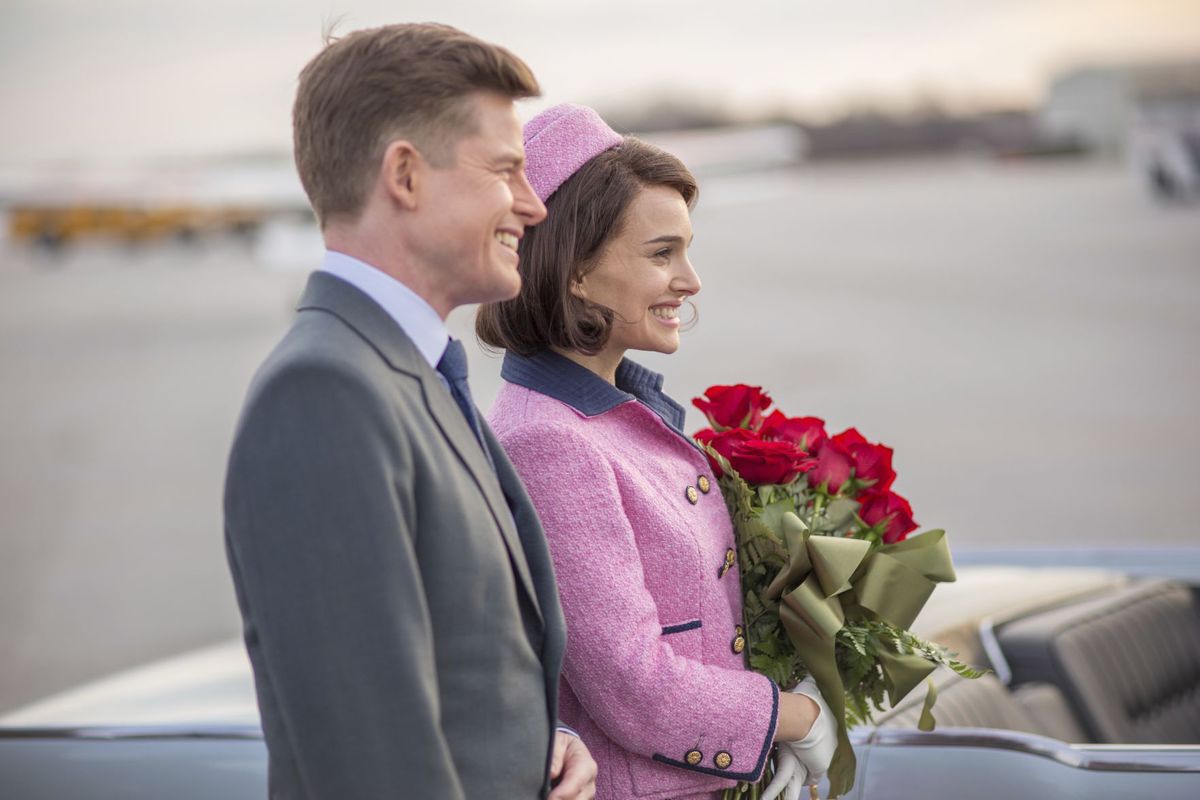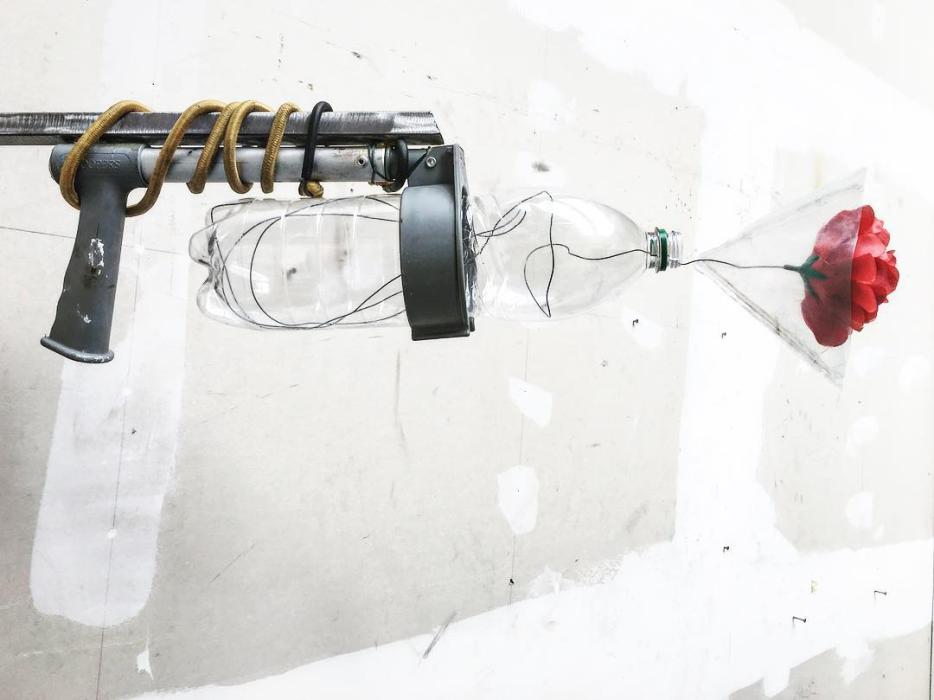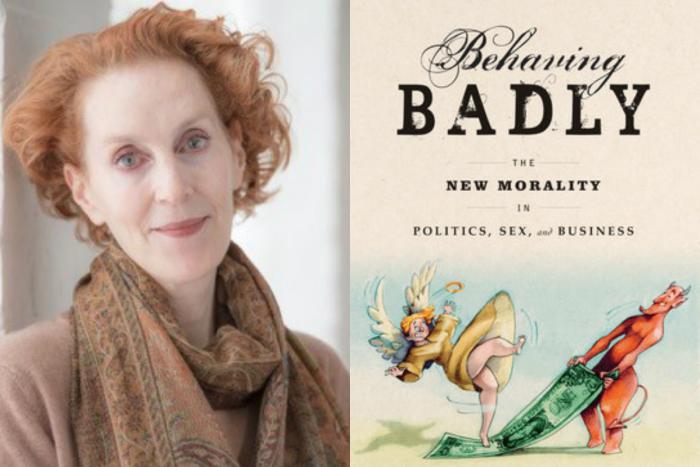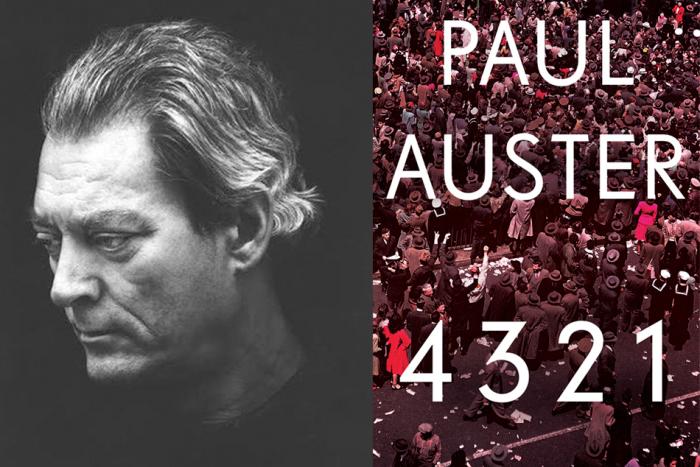“I mean, there’s no work involved
in being a rose, it seems.
As soon as God looks out the window,
he creates the house.”
— Rainer Maria Rilke, Les Roses
“Can we complete ourselves like roses do?”
—Rainer Maria Rilke, Les Roses
A guide to making roses bloom on a specific date, for a special occasion, is divided into four elements: timing, technique, hedging your bets, and considerations. Addressed to home gardeners in San Francisco, the guide minus context is one of the two most applicable advice columns I’ve read this year, the other being an op-ed in the Washington Post encouraging Chelsea Clinton, for the sake of her “political future,” to “disappear.” For me a garden seems unlikelier to have than a political future. Still, I am interested in how roses live. I find out, for instance, that the first auroral blooms in the International Test Rose Garden in Portland, Oregon arrived by the end of March, as they did last year and the year before and as they did not in the years before that, when the seasons had order. Gardeners talking to newspapers are sometimes concerned, knowing that a backlash to the early warmth, a frost in mid-April, can blight a rose before it fully lives. By summer the bloom cycles are easier to control, and begin when the gardener “deadheads” the roses, inducing new life; when it is warmer the blooming season is longer, which sounds ideal. Not so, explains an Australian rose grower, saying that a shorter hibernation means “the roses are being put under more stress.”
This delicate internal clock is one thing that makes the rose a dread metaphor for romantic love, and for years, in fact for the first decade of my sexual life, I refused to accept a single stem from a single new lover. Timing was at the heart of my superstition, which I expressed as a resistance to clichés. Yet the week I got engaged to a man I had known for a month, I paid a studio visit to the artist Scott Campbell, whose main medium is tattooing, and who demonstrated a homemade, prison-style tattoo gun by inking, on my ankle, a classic long-stemmed rose from his repertoire. Things that were sudden also felt right to me at the time, and forgetting that I had not planned to get a tattoo, or that I would not have a picked a rose for myself, I stipulated only that Campbell draw it with thorns (no trope is more personally irritating than that of a woman who, in love, becomes defenseless). Four years later, the petals retain the impression of a velvety rubescence, despite being inked in plain black.
I feel like, what’s the point of a rose? Does the rose need a point?
* * *
Maybe my tattoo has fostered a frequency illusion, but I swear that the traditional flowerage, in traditional red, is a trend gone strong. Over a dozen or so seasons, the rose has cropped up as a motif or ingredient in runway and off-runway fashion, organic and “natural” beauty products, fragrances for people under the age of 34, and certain romanticizing strains of reluctantly contemporary art. A beloved museum show of 2016, held at the Massachusetts Museum of Contemporary Art, was Alex Da Corte’s “Free Roses,” named for a dream of buying all the roses from a roadside flower-seller and giving them away. One of my favourite people is a painter, Sam McKinniss, who mixes carmine and white over silver to make livid roses reminiscent of Fantin-Latour, and if I could have any new sculpture, it would be the one by Jesse Darling involving an artificial bloom at the neck of a plastic one-litre bottle, an IV bag filled with anti-freeze, hooked on a bungee cord, and a homemade, ersatz gun, all wired together to look like a dish from an anarchofeminist cookbook. On social media, whether the feed is primarily aesthetic (Instagram), socialist and literary (Twitter), or aesthetic and literary (Tumblr), I see bright or dark red roses “everywhere,” where they used to be shunned: they are your grandmother’s and your mother’s roses, now embroidered on satin bombers or black leather winklepickers or handbags, enamel-pinned on totes and blue denim jackets, printed on slipdresses, plucked from the nearby bodega and posed in a “selfie” or still life (to me a still life of one’s posessions is also a kind of “selfie,” my least favourite word) that is taken on a rose-gold iPhone 6, the lens smeared a little with face oil for an ad hoc soft-focus glow, a picture that seems to say, “Funny. Red roses for me.”
Those are the words said to have been thought by Jacqueline Kennedy on the Love Field in Dallas, Texas around noon on November 22, 1963, when she and John F. landed and she was handed a bouquet. The state’s official flower is a yellow rose, so yellow are the roses given to visiting dignitaries, but on the second day of the President’s visit there was a city-wide shortage. Red was the next-best colour. A field called love. A wool bouclé suit in Mattel Barbie pink, originally designed by Chanel but reproduced by a Seventh Avenue tailor, a Polish Jew who immigrated to New York City in 1952, so that the First Lady could say it was “made in America.” The script by Noah Oppenheim for the Pablo Larraín film Jackie contains, in place of her thought, “a beat, as she eyes the crimson blossoms,” before she is dazed into smiling by the noise of the crowd. (Henry Green, in his 1946 novel Back, shows a soldier coming home with one leg, having lost the other “for not seeing the gun beneath a rose,” a worst-case definition of sub rosa that the dead Jackie might have appreciated. Darling’s afore-described sculpture, Gun I (2014, remixed 2016), puts it similarly.) Hours later she will begin to be grateful for the crowds, the photographed evidence for her refusal to see “Jack” as a casualty, which he is in a strict sense. Nothing’s heroic about dying in a convertible. Yet the rain had gone, the sky was clean and bright, the weather in essence was prepped for a celebration to which the witnesses had invited themselves, and so as a symbol or catalyst for the loss of “our freedoms,” few events are so endless as Kennedy’s death. Red on a sunny day remains unreal.

Cy Twombly
In the fall of 1986, the President, who was Ronald Reagan, proclaimed the rose to be the “national floral emblem” of the United States of America. After that the bloom came pretty quickly off the symbol. “I hate roses,” Twombly told Vogue in a second profile, this one at a Gaetan villa, in 1994. “Don’t you? It’s all right if you can hide them in a cutting garden, but I think a rose garden is the height of ick.” Vogue must have concurred, because by the time of my white suburban prom in Southern Ontario, a chronotope not rife with sophistication, everyone knew a corsage or spray of roses was embarrassingly formal, too dressy, overdetermined. A chill girl wanted a silver heart necklace from Tiffany, and later in the 2000s, living under the shared aesthetic of Marc Jacobs and Sofia Coppola, she wanted hand picked bunches of daisies and a white iPod loaded with post-punk. Long-stemmed red roses were about as welcome a gift as an Andrea Bocelli CD, and were used to signal melodramatic irony (see: American Beauty, a movie that can only be rated relative to nighttime soap operas) and to make, depending on the audience, a fun game or borderline mockery (or both) of heteromantic ideation (see: the central schtick of The Bachelor).
“We both know it’s not fashionable to love me,” sings Lana Del Rey, proudly, on her 2015 album Honeymoon. Were Lana’s brand of Americana to have its own flag, it would be a print on satin, not silk, of the opening shot in Blue Velvet. A film by David Lynch, released the year Reagan issued the proclamation about the rose. A white picket fence against the sky with the red double blooms, a visual on the phrase “newly patriotic.” Newly hip, too. Lana and I both know it’s trendier now to be a bit unfashionable. What she calls “my mother’s suburban glamour” and I call the “lil’ bourgeois aesthetic” entails a somewhat wishful, somewhat wry interest in signifying the deluxe, in looking like the return of the middle class to cul-de-sacs on golf courses, to white-cloth restaurants and daytime gin in midtown. Roses by other names include: rhinestone clip-on earrings, long nude nails, marabou mules, blouses buttoned all the way up or black lace bodysuits. Wristwatches with gold faces and leather bands to match slim gold-tipped cigarettes. Eyeshadow to match light blue jeans, high-waisted and cropped to make ankles sexy. I personally know five women under the age of 34 who own wool bouclé skirt-suits, and none of them live in the White House. These are women who have never been called “young ladies,” who have uneasy permalance relationships with corporate employers, who have breakfast at Duane Reade instead of Tiffany’s, and who, if they get married, do not then expect to be happier.
These are not all white women, I should say, but I should also say that my ideas of “suburban” and “middle class” were formed in whiteness and by trying to fit in. Ditto my sense of what’s fancy. To my friend Durga, whose family moved to Canada from India before she was born, roses smell neither rich nor sweet but neutral. To my friend Tara, who moved with her mother to Canada from Iran in her teens, rosewater is an ingredient slightly less common than sugar. I recently got entranced with a video in which Princess Nokia, a Nuyorican recording artist in the Bronx, makes her own rosewater facial mist with fresh petals, agua de Florida, and water to steam, poured into a dollar-store spray bottle. (“Most flowers have a gender identity,” she explains, unscientifically. “Roses are like the most female.”) Her tender, easy process gave me the meaning of “self-care,” a concept that hadn’t previously appealed to me, as it sounded like phoning and ordering flowers to your own bedside; when I saw it in practice, not exactly as preached by Audre Lorde, it looked akin to the kinds of (in)activity our mothers called “relaxing” and “mindless,” the face masks in front of the television and the forty-minute bubble baths. Self-care seems better when it means something like “tending your own garden.”
* * *
There has been, for like a hundred years, a heady socialist overtone to the subgenus Rosa. “Bread and roses,” the titular line in a 1911 ode by James Oppenheim to the American women’s movement, became a famous demand at worker’s strikes and a trade union’s motto (histories differ as to whether the union organizer Rose Schneiderman, who demanded bread and roses in a speech the same year, inspired or was inspired by Oppenheim). In the winter of 1912, women led a massive two-month textile strike in Lawrence, Massachusetts, chanting, “Yes, it is bread we fight for, but we fight for roses, too.” Those who are needy are also, and equally, desirous. This is a message so basic it should never have gone out of style.
The thinker and writer Jacqueline Rose, in her recent book Women in Dark Times and elsewhere, argues that the Polish, Jewish, and Marxist revolutionary Rosa Luxemburg was a moral and sensual force and a changeable spirit who thought “passion—like politics—was a question of freedom.” Nicknamed “Red Rosa” as she climbed to prominence in Germany’s Social Democratic Party and “Bloody Rosa” after she broke ranks and was imprisoned for radical actions, she was described by comrades as “tiny, fragile” and “selfless” and by the prosecutors who imprisoned her as “rootless.” The image stemming from these descriptions is of a gift rose in crimson, her leaves and thorns lightly intact, living her shortened life in a vase on a pedestal. Obviously this is more romantic than accurate: Luxemburg, who has also been described as one of the twentieth century’s best thinkers, believed in spontaneity and permanent change and identified mostly with birds. Her view on the Russian Revolution was romantic and accurate at once, as like a Brontë heroine rushing to love, she could see it was doomed but believed in it anyway (or meted her belief according to the measure of its doom, depending on your reading of her mind). Rose sees the conflict between Lenin and Luxemburg in psychoanalytic terms, saying that while Lenin fixated on the size of a problem, Luxemburg laid fingers on the deeper cause, or the inner meaning, and so was “offering a counter-erotics of revolution.” Assuming she cared for her namesake flower, this revolutionary, this determined internationalist, would have been disturbed to find the rose a symbol of state and national pride, or of a woman’s welcome possession by a lover.
Luxemburg wrote in a 1911 article, “Peace Utopias,” that the war-and-peace dialectic in capitalism, responsible for an expensive international arms race that was supposed to end and be ended with “world peace,” was proof that “the roses of capitalist profit-making and class domination also have thorns for the bourgeoisie, which it prefers to wear as long as possible round its suffering head, in spite of all pain and woe, rather than get rid of it along with the head on the advice of the Social Democrats.” (Eventually it would be the Social Democrats who, two months after the end of World War One, had Luxemburg executed for her Communism. Remember the Queen of Hearts? “For painting my roses red / Someone will lose his head.”) From prison, where she spent time with prostitutes, Luxemburg wrote a sweeping piece of literary criticism in which she cast the crown of roses a little differently, fashioning an answer to Tennyson’s old “rose of womanhood” in a passage on prostitution in Russian literature. Unlike his English and French counterparts, says Luxemburg,
“the Russian artist … dignifies the prostitute and rehabilitates her for the crime that society has committed on her by letting her compete with the purest and loveliest types of womanhood for the heart of the man. He crowns her head with roses and elevates her, as does Mahado his Bajadere [in Goethe’s poem ‘Der Gott und die Bajadere’] from the purgatory of corruption and her own agony to the heights of moral purity and womanly heroism.”
It’s funny how many contradictions elicited by the rose, bred by its infamous symmetry, can be addressed by saying that the rose both has and is currency. Used as legal tender by seventeenth-century royals in Western Europe, today roses are used by sex workers online to euphemize pay, as in “300 roses per hour.” Roses in emoji form are also used, on Twitter, to signal membership in the Democratic Socialists of America (DSA), a left-wing populist organization whose ranks have nearly tripled in the last six months, and whose agenda is more or less set against global capital. Because some of the Democratic Socialists are also members of a partly fictitious, partly metafictitious group known as “Bernie Bros,” there are liberals who think the rose emoji is to the left or the sometimes-called “alt left” what the frog emoji is to the Breitbartians (a longer word for barbarians) of the “alt right.” The idea here, if there is one, is that the rose is a cover for the stench of rank masculinity, but to think that any one group, even if it were male-dominated, could usurp a symbol so classic and storied is ridiculous. Before, during, and after Pepe, a green frog signifies little beyond the princely delusions of laughable men. A frog does not speak to human dignity. A rose still does. When a friend texts me a rose, she is saying not to worry about my worth.
As for what it says about my political or more personal nature that I prefer the newer rose emoji, thorny and dissolute and darker, visibly dying, I don’t feel like explaining it. Frankenstein said it best in The Bride of Frankenstein, iterating to his creator that yes, he understands his fate, knows which side he’s seen to be on: “I love dead,” he says. “Hate living.” I love cemeteries for being and for remaining the only solid grounds, whereas everything else solid, as you may have heard, melts into air. I love the way Twombly painted dead heads of empire in the Sixties, and the way Nobuyushi Araki, the Japanese photographer, answered an interviewer who asked how he made old-fashioned flowers look hot: “Why do they come across as erotic? Because I shot them.” I love when Lana wishes she were already dead. I know what Jacqueline Rose means when she says “capitalism cannot hide its ugliness from the world (periodically revealing that ugliness is simply the obverse of its inhuman powers of endurance).” Ugliness may be human, and more original than beauty; beauty lapses easily into cliché, but then suggests that clichés, the good ones at least, begin as efforts to describe the irreducible. I would love to buy roses to watch them die. I don’t buy them. I would never be able to throw them out.






